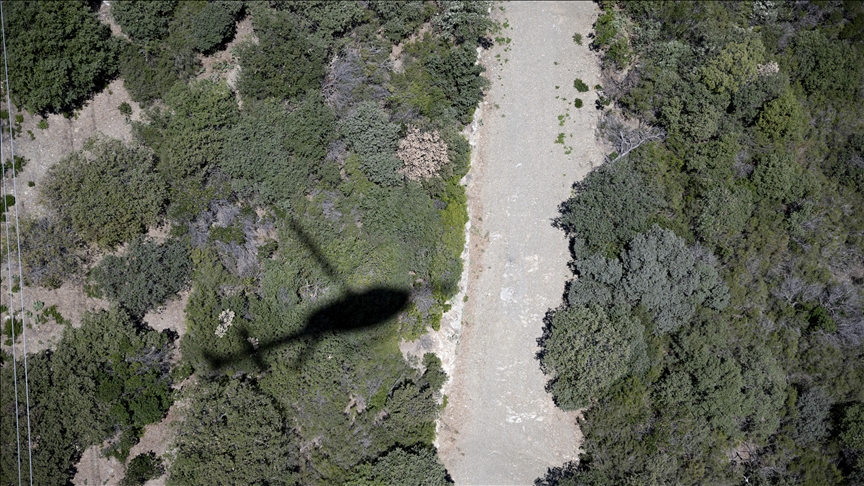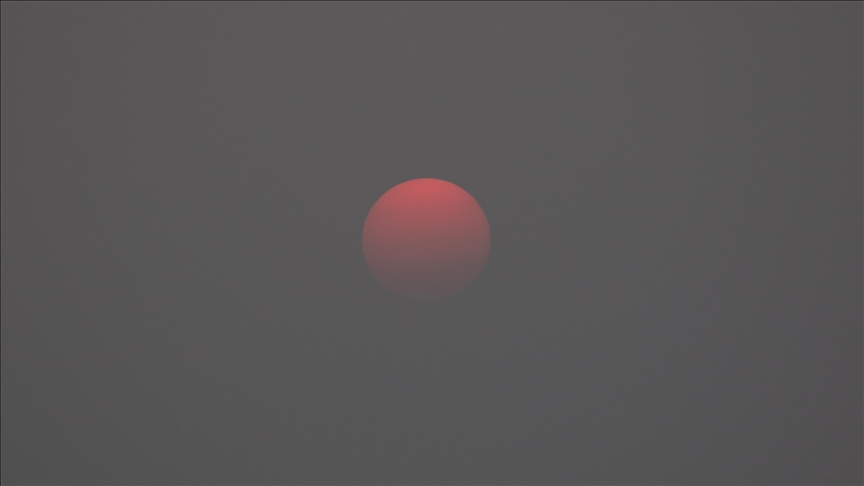
Chocolate Orc Blood and an Explosive Cliffhanger: How ‘Rings of Power’ Made Its Own Helm’s Deep
SPOILER ALERT: Do not read if you haven’t watched “The Lord of the Rings: The Rings of Power” Episode 6, titled “Udûn,” now streaming on Amazon Prime Video.
With three more episodes left in its inaugural season, “The Lord of the Rings: The Rings of Power” finally delivered the massive battle sequence for which fans of the epic fantasy franchise have waited patiently. While not quite as massive as the Battle of Helm’s Deep from the 2002 feature film “The Lord of the Rings: The Two Towers,” the episode, “Udûn,” still considerably ramped up the scope of the action for the series, delivering nearly non-stop, near-death moments and ending on a massive cliffhanger that also establishes one of the most consequential events in the history of J.R.R. Tolkien’s Middle-earth.
In the episode, dark elf Adar (Joseph Mawle) and his orc army arrive at the mountain fortress where Arondir (Ismael Cruz Córdova), Bronwyn (Nazanin Boniadi) and the Southland villagers are supposed to be holed up. They find it empty instead — until Arondir launches a one-man sneak attack and topples the stone watchtower on top of a good chunk of Adar’s forces. Arondir and his fighters regroup before an even bigger assault by Adar; the Southland villagers seemingly prevail, until they notice that some of Adar’s fallen minions are actually their fellow Southlanders who pled allegiance to Adar in the (false) hope of sparing their lives. Adar’s remaining forces ambush the villagers in a flurry of arrows as their leader searches for, and finds, the mysterious Sauron blade he’s been seeking all season.
The day is saved (briefly) when Galadriel (Morfydd Clark) storms in with her Númenórean army. She and Halbrand (Charlie Vickers) apprehend Adar, who is revealed to be one of the first elves corrupted by the evil dark lord Morgoth. While Galadriel interrogates Adar, the human turncoat, Waldreg (Geoff Morrell), secretly arrives at the fallen citadel with Sauron’s blade and uses its mysterious power to unleash a cataclysm onto Middle-earth. The dam holding back a mountain lake opens; its water follows the canals dug by the orcs and their prisoners; and ultimately pours into the magma chamber of a nearby dormant volcano. It erupts, blanketing the Southlands in fire, ash and darkness. We’ve just witnessed the birth of the infamous Mount Doom of Mordor.
Director Charlotte Brändström — who’s directed episodes of “The Witcher,” “Outlander,” “The Outsider” and “Arrow” — and Clark and Córdova explained to Variety how the monumental episode, full of horseback knights and orcish invaders, came to be.

The Charging Horses of Númenor
Brändström already knew “The Lord of the Rings” well and dove into action movies, like “Braveheart” and “Gladiator,” as inspiration, but she also researched real-life ancient battles.
“I’d been studying a lot of the Ukrainian Cossacks and how they were fighting on horseback, hiding behind horses, trying to avoid arrows and bullets,” she said. “They were incredible horsemen. I wanted to do something different when the Númenóreans came to the village to save everybody. We worked on that for months in advance in New Zealand to make sure they were actually on horseback. I knew that would be spectacular.”
One of the most stunning moments in the episode comes as Galadriel, Halbrand and the whole Númenórean crew arrived on horseback to rescue Arondir and the villagers in the Southlands from Adar’s orc army. The sequence used 20-30 horses and a total crew of 150-200 people, Brändström said.
She would have preferred to use even more horses but, as with so much of “The Rings of Power,” the majority of the episode was shot during the height of the pandemic.
“It was very hard to get access to train horses to be part of this battle,” she said. “I tricked it by coming in from a lot of different directions and reusing the same horses” and then expanded their numbers with visual effects.
To prepare for the sequence, the horse riders trained for four months, with three hours of stunts every day and three days of riding every week. The training was especially helpful for Clark; while Galadriel is a natural rider who expertly gallops into battle wearing her shining armor, the actor had never ridden a horse before.
“Lots of us had started having never ridden — me anyway — and were quite nervous and scared,” she said. “I rode a horse called Titan, who is apparently one of the greatest horses they’ve ever had and is the most well trained. I feel that a lot my horse riding skills are down to the horse I was on, but I’m no longer terrified. Once you feel comfortable on a horse, it’s the closest to magic I’ve ever experienced. You also have this connection to the people of the past, something that humans have done forever.”
During the fierce battle, Galadriel swiftly dodges orcs’ spears and arrows by sliding off the saddle to the side of her horse, but Clark admits it was a stunt person who took her place.
“I can’t believe that was possible. Before doing this, I thought so much of horse stunts were CGI, but it wasn’t,” she said. “There were loads of amazing stunt riders on this, but their horses were incredible and so was the connection they had with them. Seeing the stunt team say goodbye to their horses when we finished was really emotional.”

Arondir’s Bloody Face-Off
Not to be outdone by Galadriel, Arondir takes down ranks of orcs with his bow and arrow and by collapsing the massive stone watchtower with one well-timed, flaming arrow. His most intense moment, however, comes as he faces down a massive orc, who throws him around a clearing in the village. Arondir manages to stab the berserker in the eye, but he gets pinned down and nearly strangled over a well. The orc removes the dagger from his face, gushing disgusting, black blood on Arondir’s face, but the elf is saved by his beloved Bronwyn, who dispatches the brute from behind.
“There are no stilts or or camera tricks,” Córdova said of his fight with the gargantuan orc. “The guy is massive, an incredible mover and fighter. I had to climb on him, step on his hip and leg and wrap myself around and strangle him as he’s moving around. It’s almost like being on a mechanical bull. There were no rigs, no wires, we were not being supported by anything. I was on the back of this massive man trying not to fall.”
The actor said his training for the battle took eight months, and that fight alone was three months of preparation. After all the archery lessons, martial arts training, wirework and fight choreography, he “lived in a perpetual state of soreness” and was “full of bruises.”
“The one that was the hardest was when he when he breaks the column with my back,” Córdova said. “I had to keep my head forward, tuck my chin into my chest so that when he slams me against it my neck doesn’t whiplash. But, of course, sometimes it does. My neck was just destroyed; I was like a robot walking around.”
On top of his bruises from the brutal fight scene, Córdova had to get covered with the orc’s blood, which he said was a mixture of gooey chocolate, gelatin and food coloring.
“It was so sticky, so uncomfortable and so cold when we were shooting those night shoots,” he said. “It all kept going into my breastplate. So I had this pool of sugary goo on me for the better part of two weeks.”

The Birth of Mount Doom
The episode ends on an even bleaker note with the birth of Mount Doom in the soon-to-be region of Mordor.
Brändström only learned of that critical turn of events after she arrived in New Zealand. “I just thought, wow, this is just a director’s dream,” she said. “The pressure was about trying to succeed in making it as as good as possible. It was a lot of hard work, mixing special effects and visual effects and real stunts and a lot of hard work from the crew.”
To recreate the ash and smoke billowing out of Mount Doom, Brändström turned to real-life natural disasters.
“I studied every volcanic eruption you can think of,” Brändström said. “We looked into formations of ash clouds, everything from the Pompeii eruption to what happened in New Zealand a few years ago, in the Canary Islands, in Italy.”
Creating Mount Doom was one of the few scenes in the episode set during daylight. The rest of “Udûn” is set in the dark of night — and the muck of a New Zealand winter.
“We lived in mud and rain for months,” the director said. “We had seven weeks of just night shooting. I never saw the light of day. I would come home, go to bed and get up when it was night. It was just night all the time.”













































































